A commenter named Zara recommended When God Was a Woman by Merlin Stone—a book I’ve been waiting for all my life, although it’s been out since I’ve been an adult. There are times when something fits so perfectly with what I’ve been thinking that I almost feel I’ve brought it into being.
I had that feeling with A Course in Miracles. I’d reached the same conclusions through my own process, and here was a channeled text that validated what I’d come to, that no one else had said. Except that, in the Course, all three aspects of divinity are male. How does that make sense?
Now I find out God was a woman for 9500 years, and it’s only been 1500 years since God’s sex change operation. Under the Divine Creatrix, property succession was matrilineal, and children belonged to and with their mothers. Under a female god, sex was celebrated and violence was condemned. After god became a man, violence was celebrated and sex was condemned. We could have been having 75 generations of celebratory sex instead of violence! Make love not war!
In the video I go back and forth—complete with change of costume, flowers and lighting—between my commentary and quotes from the book. Here on Substack, I add the perfectly fitting AI art of Amy Goodman, creatrix extraordinaire.
the wiser magician
Merlin begins with quotes:
Man enjoys the great advantage of having a god endorse the code he writes; and since man exercises a sovereign authority over women it is especially fortunate that this authority has been vested in him by the Supreme Being. For the Jew, Mohammedans and Christians among others, man is master by divine right; the fear of God will therefore repress any impulse towards revolt in the downtrodden female.
—Simone de Beauvoir The Second Sex 1949
In the beginning there was Isis: Oldest of the Old, She was the Goddess from whom all Becoming Arose. She was the Great Lady, Mistress of the two lands of Egypt, Mistress of Shelter, Mistress of Heaven, Mistress of the House of Life, Mistress of the word of God. She was the Unique. In all Her great and wonderful works She was a wiser magician and more excellent than any other God.
—Thebes, Egypt, Fourteenth Century BCE
she the sun, brother moon
Merlin Stone writes, “At the very dawn of religion, God was a woman.” She continues:
… I discovered accounts of Sun Goddesses in the lands of Canaan, Anatolia, Arabia and Australia, while Sun Goddesses among the Eskimos, the Japanese and the Khasis of India were accompanied by subordinate brothers who were symbolized as the moon. …
Most astonishing of all was the discovery of numerous accounts of the female Creators of all existence, divinities who were credited with bringing forth not only the first people but the entire earth and the heavens above. There were records of such Goddesses in Sumer, Babylon, Egypt, Africa, Australia and China.
In India the Goddess Sarasvati was honored as the inventor of the original alphabet, while in Celtic Ireland the Goddess Brigit was esteemed as the patron deity of language. Texts revealed that it was the Goddess Nidaba in Sumer who was paid honor as the one who initially invented clay tablets and the art of writing. … The official scribe of the Sumerian heaven was a woman. [3]
social is spiritual, spiritual is social
Sheila Collins writes:
Theology is ultimately political. The way human communities deify the transcendent and determine the categories of good and evil have more to do with the power dynamics of the social systems which create the theologies than with the spontaneous revelation of truth from another quarter. [66]
How do the categories of good and evil change from a ‘pagan’ god to a patriarchal god? Most ‘pagan idols’ had breasts, Merlin states. The Torah glosses over the sexuality of the deity and turns the Goddess into the word Elohim! But the Quran states clearly, “Allah will not tolerate idolatry … the pagans pray to females.”
Professor RK Harrison wrote of the Goddess religion, “One of its most prominent features was the lewd, depraved, orgiastic character of its cultic procedures.” … Professor WF Albright, one of the leading authorities on the archaeology of Palestine, wrote of the female religion as “orgiastic nature worship, sensuous nudity and gross mythology.” He continued by saying that “It was replaced by Israel with its pastoral simplicity and purity of life, its lofty monotheism and its severe code of ethics.” [xix]
Merlin notes the use of word tricks. ‘Cults’ and ‘fertility cults’ refers to feminine, ‘religion’ refers to the masculine. Sexually active Goddesses are ‘Virgin-Harlots’ while male deities who rape or seduce women are playful and virile. The priestesses who follow holy sexual customs are ‘ritual prostitutes’. Females are ‘deities,’ males are ‘gods’
woo-woo wooing
Under the Divine Ancestress, the power sought is over one’s own body, own sexuality, own economic activities, and a place of one’s own—not just a room but a whole tomb:
Dr. Murray suggested that “Women’s condition was high, due perhaps to their economic independence.” … One of the earliest archaeologists of the pyramids of Egypt, Sir William Flinders Petrie, wrote in 1925 that “In Egypt all property went in the female line, the woman was the mistress of the house, and in early tales she is represented as having entire control of herself and the place.” …
Love poems, discovered in Egyptian tombs, strongly hint that it was the Egyptian women who did the courting, oftimes wooing the male by plying him with intoxicants to weaken his protestations. …
… at the level of royalty, the Egyptian culture at most periods was matrilineal.
what goddess hath joined together
Many eminent anthropologists, some of them women, think that “primitive peoples did not understand biological paternity or accept a necessary connection between sexual intercourse and conception.” [Jacquetta Hawkes] Or “How the infant came to be in the womb was undoubtedly a mystery to primitive man.” [SGF Brandon] And even James Frazer and Margaret Mead state “before the secret of human fecundity was understood, before coitus was associated with childbirth, the female was revered as the giver of life. Only women could produce their own kind, and man’s part in this process was not as yet recognized.” [Leonard Cottrell] [11]
This may have been a mystery to men but there’s no way women—understanding animal husbandry, writing, and the cosmology of the stars—were clueless about their own bodies. But this had a practical benefit:
… the mother would have been seen as the singular parent of her family, the lone producer of the next generation. For this reason it would be natural for children to take the name of their mother’s tribe or clan. Accounts of descent in the family would be kept through the female line, going from mother to daughter, rather than from father to son, as is the custom practiced in western societies today. Such a social structure is generally referred to as matrilineal, that is, based upon mother-kinship. … not only the names, but titles, possessions and territorial rights are passed along through the female line, so that they may be retained within the family clan. [11-12]
I see the Bible as interweaving truth and lies. The truth is “What God hath joined together, let no man tear asunder.” The lie makes this marriage, and the rabbi or priest acting as God. What God the Creatrix hath joined together is the mother and the child, and no man should tear them asunder—not for circumcision, adoption, custody battles, and definitely not surrogate mothers with wombs for hire.
the love migration
In addition, marriages were matri-local, where the husband moved to the wife’s family home or village. And agriculture is attributed to the Goddess:
C. Dawson, writing in 1928, surmised that “The earliest agriculture must have grown up around the shrines of the Mother Goddess, which thus became social and economic centers, as well as holy places and were the germs of future cities.”
W. Schmidt, quoted by Joseph Campbell in Primitive Mythology, says of these early cultures, “Here it was the women who showed themselves supreme, they were not only the bearers of children but also the chief producers of food. By realizing that it was possible to cultivate, as well as to gather, they had made the earth valuable and they became, consequently, its possessors. Thus they won both economic and social power and prestige.” [18-19]
Let’s imagine this today, from the perspective of a young man. Maybe you stick close to home and marry the girl on the farm next door. Or maybe you’re an adventurer and go halfway around the world to fall in love. She loves you back so you move into a house on her land. Maybe you build your own, with the help of her father, brothers-in-law and unmarried uncles.
If you pay any mortgage, it’s to build or make renovations. You help produce the food and tend the animals, but you have extra time. You might start a business. When you have children, they take your wife’s name. You educate them, as does the rest of the extended family. If you and your wife split up, your kids won’t lose their home. You might move nearby, while they’re young. You might go back to your family home. You might, as a man with skills, move in with someone else. But, unlike now, the homes would stay owned by families and not the banks.
matriciding the goddess
Here are the subtitles from source documents, of where God was a woman:
Ethiopia and Libya—”All authority was vested in the woman.”
Egypt—”While the husbands stay home and weave.”
Sumer—”The women of former days used to take two husbands.”
Elam—Naked before the high priestess
Babylon—”To hold and manage their own estates.”
Anatolia—”From old they have been ruled by women.”
Crete—”Dominated by the female principle”
Greece—”The attack upon the matrilineal clans.”
There has even been the suggestion that the Mycenaeans [who conquered Crete and Greece] were related to the Hyksos, the ‘shepherd kings’ who used horse-drawn war chariots and had previously held Egypt under their rule for several centuries. The Hyksos were driven out of Egypt at much the same time as the Mycenaeans first appeared. [49]
In anthropology, my search has been for the origin of power over others. When, where and especially how did that first become normalized? From the research of Davids Graeber and Wengrow in The Dawn of Everything, it wasn’t normal in North America before their conquest by the Europeans. And the same race, perhaps driven by the same dynasty, did the conquering and trickery:
… their arrival was not a gradual assimilation, as the Goddess peoples’ seems to have been, but rather a series of aggressive invasions, resulting in the conquest, area by area, of the Goddess people.
These northern invaders, generally known as Indo-Europeans, brought their own religion with them, the worship of a young warrior god and/or a supreme father god. Their arrival is archaeologically and historically attested by 2400 BC but several invasions may have occurred even earlier. … As the invaders gained more territories and continued to grow more powerful over the next two thousand years, this synthesized religion often juxtaposed the female and male deities not as equals but with the male as the dominant husband or even as Her murderer. [20]
goddess of canaan, lowest of slaves
Once again, the tiny land of Canaan, modern day Palestine, is singled out as most despised. And who knew they even had a goddess, so completely she’s been erased?
Accounts of the antagonistic attitudes of Judaism, Christianity and Mohammedanism (Islam) toward the sacred artifacts of the religions that preceded them revealed that this was so, especially in the case of the Goddess worshiped in Canaan (Palestine) [Ashtoreth/ Astarte]. The bloody massacres, the demolition of statues (i.e. pagan idols) and sanctuaries are recorded in the pages of the Bible following this command by Yahweh: “You must completely destroy all the places where the nations you dispossess have served their gods, on high mountains, on hills, under any spreading tree; you must tear down their altars, smash the pillars, cut down their sacred poles, set fire to the carved images of their gods and wipe out their name from that place” (Deut. 12:2-3) [xvii]
Theology is sociology, illustrated in a study of Hebrew women in Ancient Israel, done by archaeologist and Bible scholar Roland de Vaux:
The social and legal position of an Israelite wife was inferior to the position a wife occupied in the great countries round about … all the texts show that Israelites wanted mainly sons, to perpetuate the family line and fortune, and to preserve the ancestral inheritance … A husband could divorce his wife … women on the other hand could not ask for divorce … the wife called her husband Ba’al or master; she also called him adon or lord; she addressed him in fact as a slave addressed his master or a subject, his king. The Decalogue includes a man’s wife among his possessions … all her life she remains a minor. The wife does not inherit from her husband, nor daughters from their father, except when there is no male heir. A vow made by a girl or married woman needs, to be valid, the consent of the father or husband and if this consent is withheld, the vow is null and void. A man had the right to sell his daughter. Women were excluded from the succession. [55]
The consorts of the Goddess throughout the region were the serpent, the snake, or the dragon. In myths from Tiamat and Set to St. George, men subdue the serpent. And Eve, the snake, is condemned to crawl on her belly before her master.
the unmothered millennium
Merlin writes that “the transition was accomplished by violent aggression, brutal massacres and territorial conquests throughout the Near and Middle East.” [28] Robertson Smith talks about the consequences of Goddess-cide on Arabia and ‘the ages of mother-kinship.’:
the change in the law of kinship deprived the mother of her old pre-eminence in the family and transferred to the father the greater part of her authority and dignity … women lost the right to choose their own partners at will, the wife became subject to her husband’s lordship …
… at the same time her children became, for all purposes of inheritance and all duties of blood, members of his and not her kin. So far as the religion kept pace with the new laws of social morality due to this development, the independent divine mother necessarily became the subordinate partner of a male deity … or if the supremacy of the goddess was too well established to be thus undermined, she might change her sex as in Southern Arabia where Ishtar was transformed into the masculine Athtar. [28]
And was the Egyptian god Au Set, also known as Isis, transformed into the sociopathic god Set, later known as Yahweh?
For the last 1000 years or forty generations, women have served men, who have served the Usurpers. Women are not asking too much to prioritize the children, they’re asking too little. Children deserve a world where mothers are not serving men or investor profits, where there is security through property ownership. And where no one can threaten the bond between mother and child. Set the children free. Free the children from Set. End the bondage to Yahweh and his henchmen.
The Divine Feminine on Jordan Peterson
Instead of women paid equally to serve investor profits, should men be liberated to serve family and community? I examine whether women even existed in government, economics or religion for the past 5000 years. I address Job and the Leviathan as a metaphor for Jordan's recent ordeals and query the missing feminine in the Trinity. I look at how divorce courts turn the family home into a dead asset, acknowledging an astute listener question on Russell's community newsletter. I end with two nods to the feminine divine: The HU's Song of Women and Wendall Berry's Manifesto: The Mad Farmer Liberation Front.
In a recent essay on The Rings of Power, Charles Eisenstein differentiates between feminine power and 'honorary men.' The Dawn of Everything by anthropologist David Graeber and archeologist David Wengrow tells the creation epic of The League of Five Nations and the Jigonsaseh, or Mother of All Nations. As we enter our dark winter of the soul and look at the cult of immaturity in so-called leadership, they show us why we are orphaned by our culture and deprived of the feminine power of all of us.






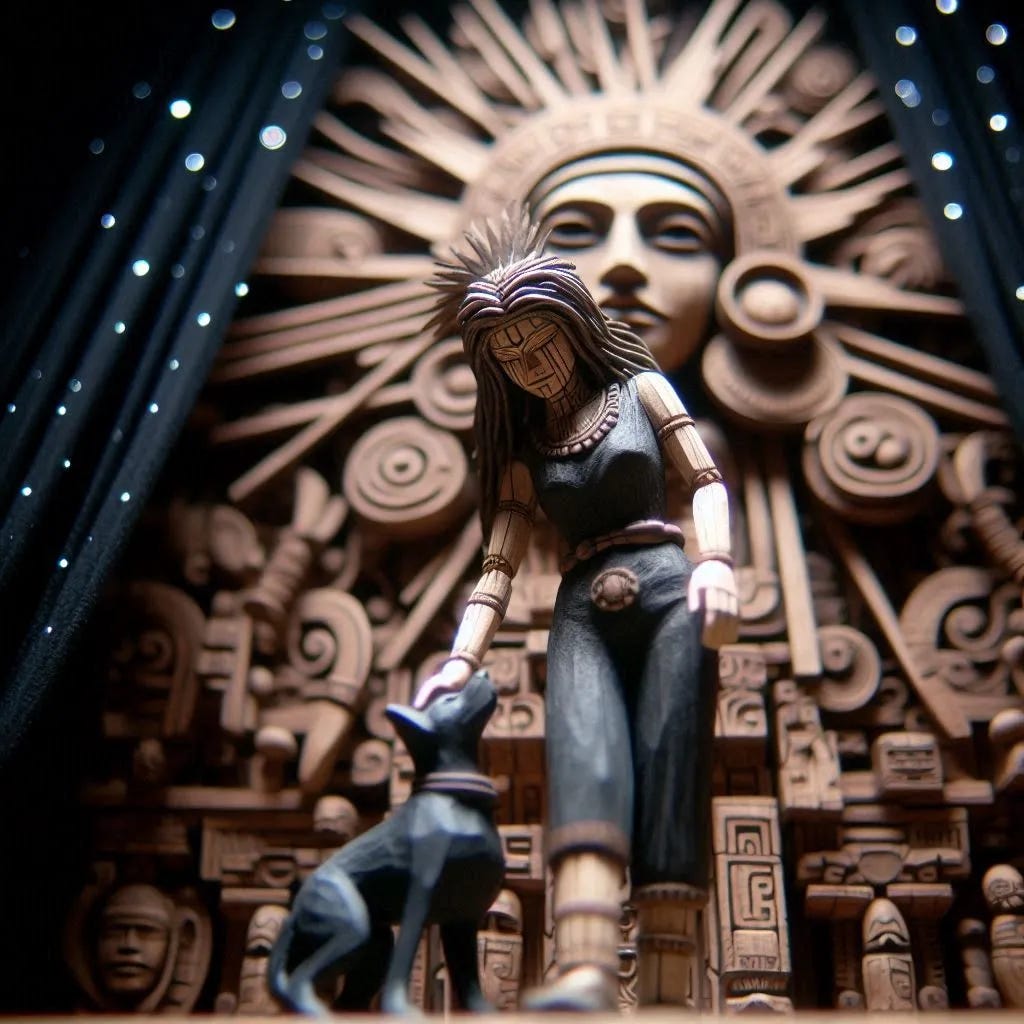


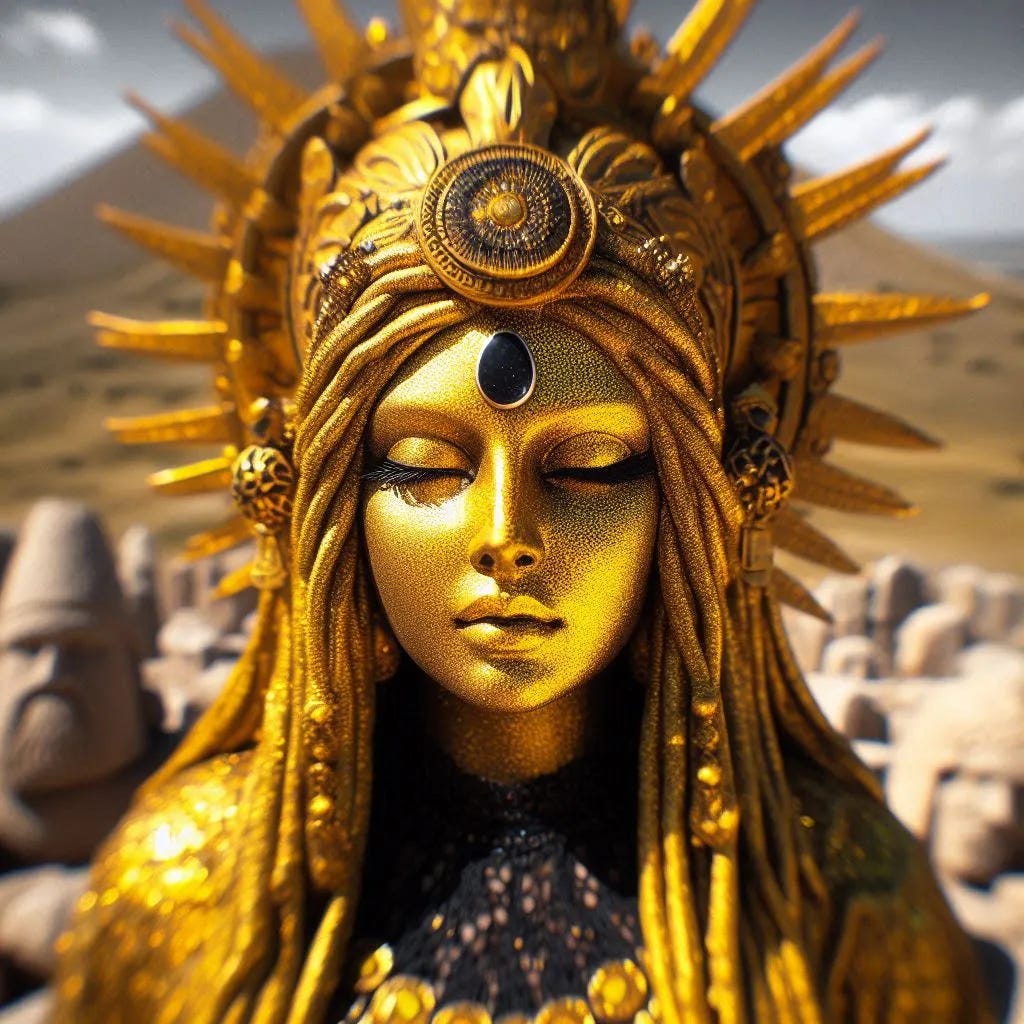
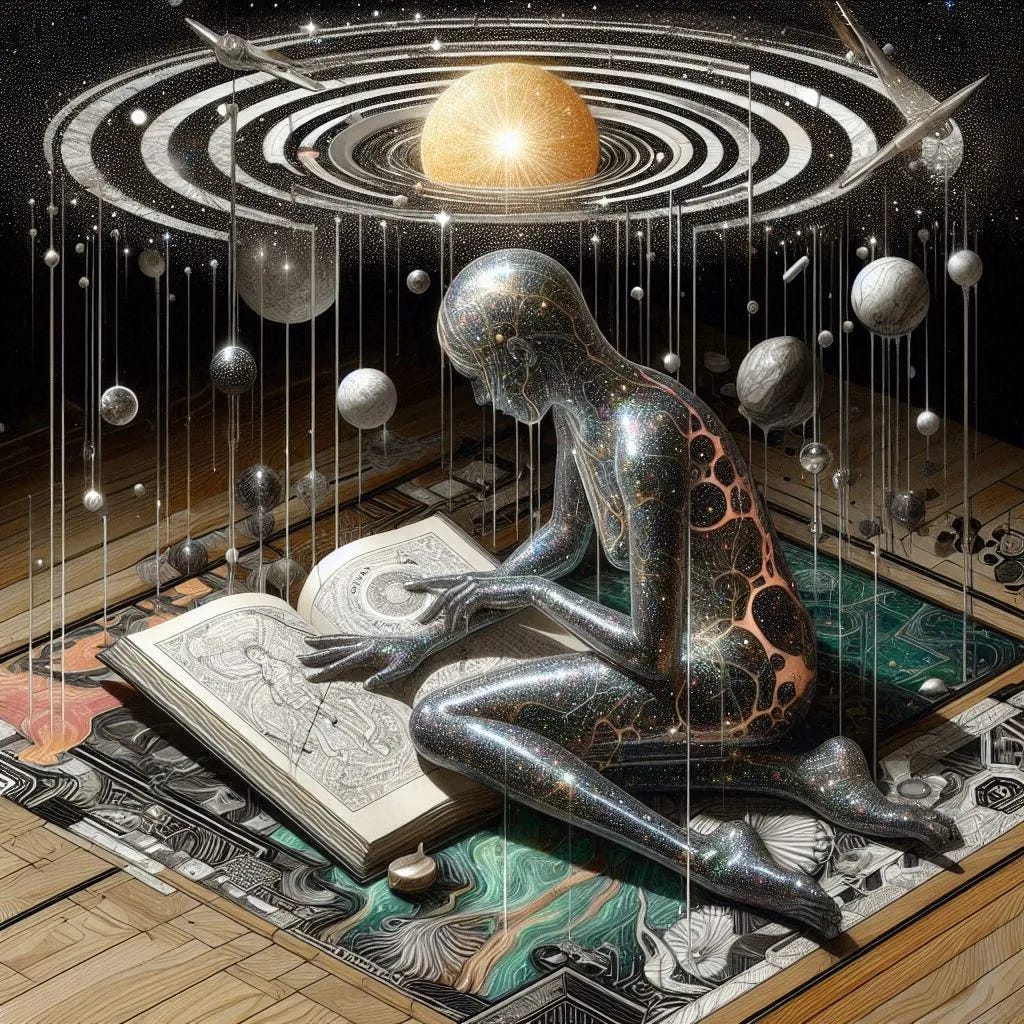
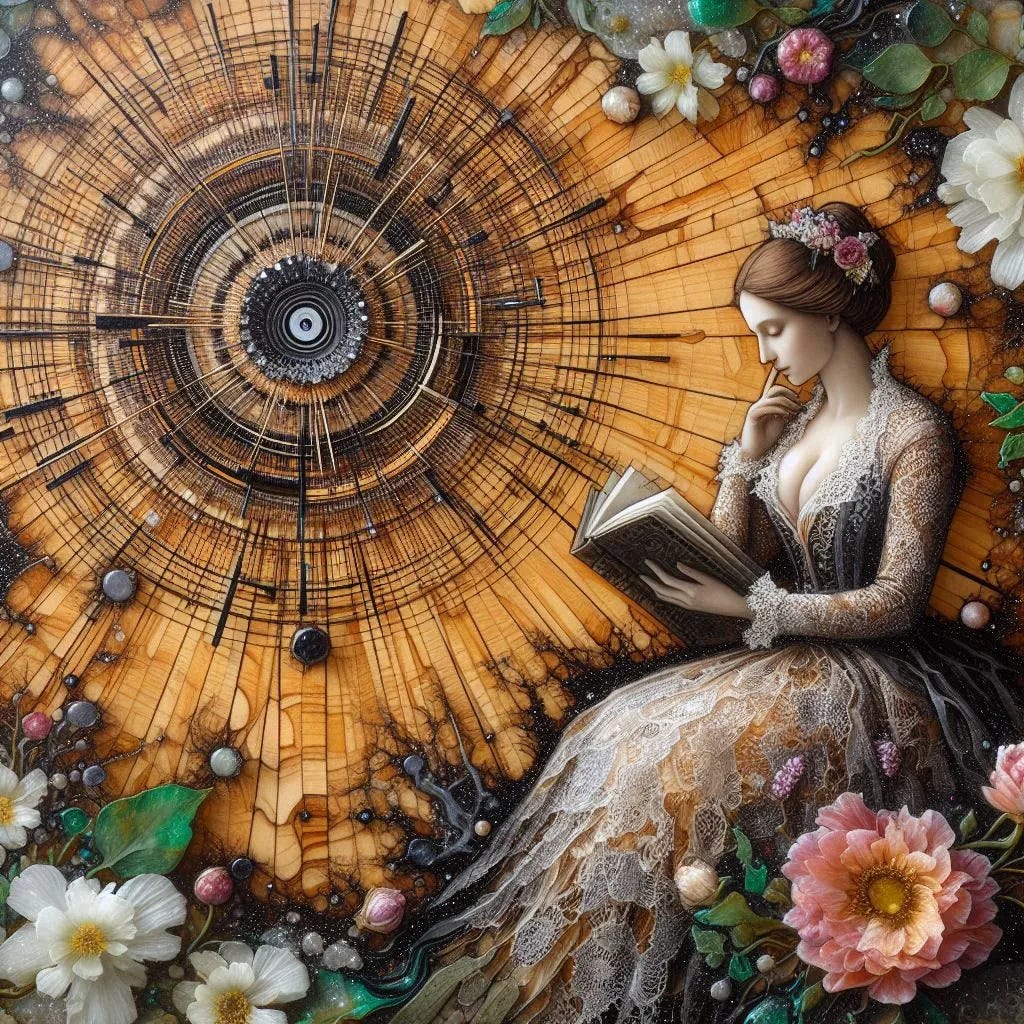
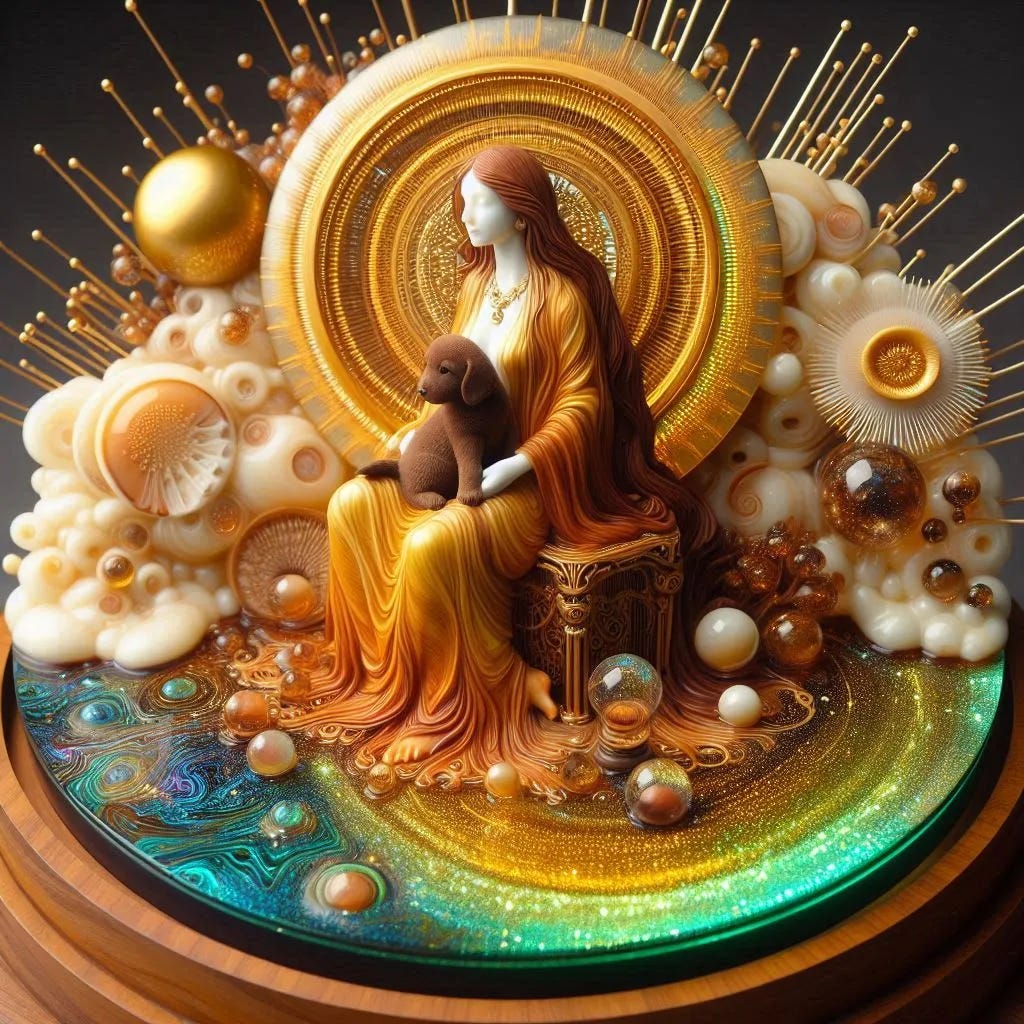
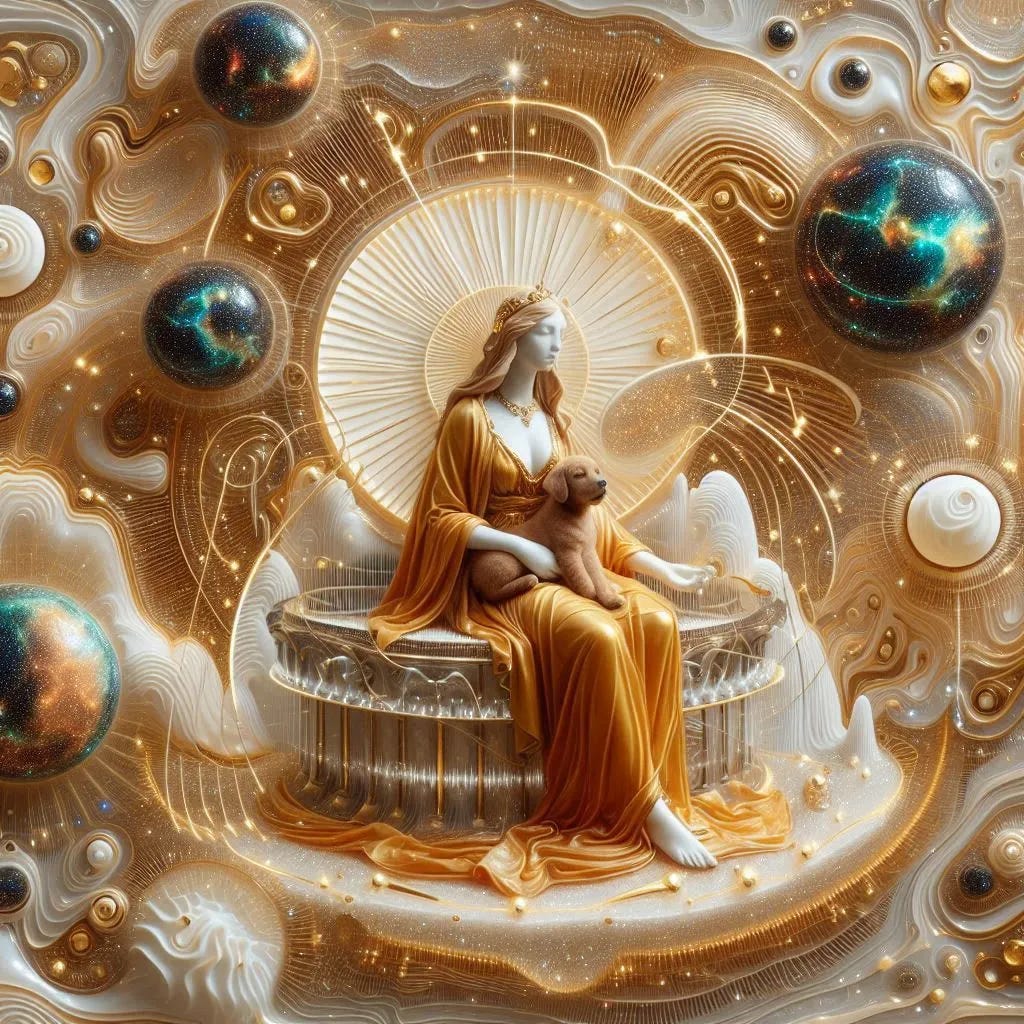



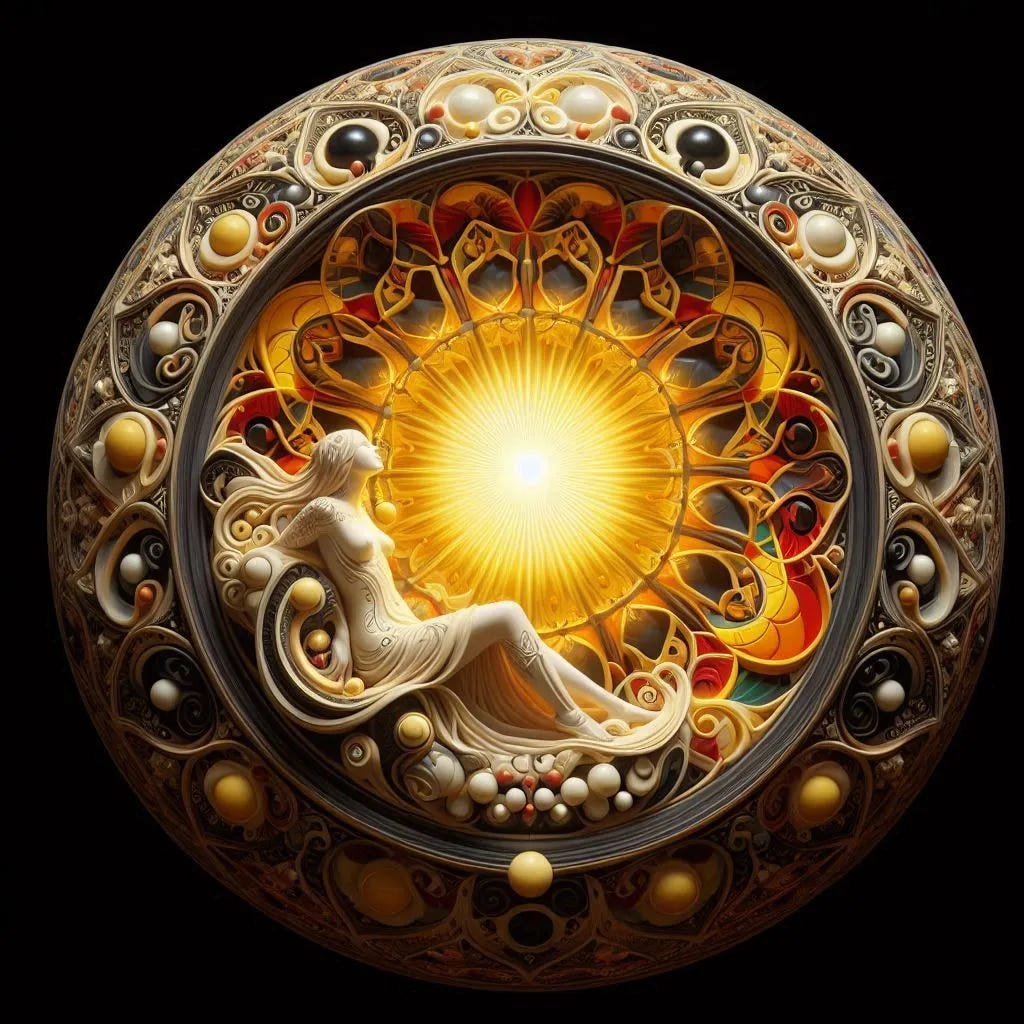
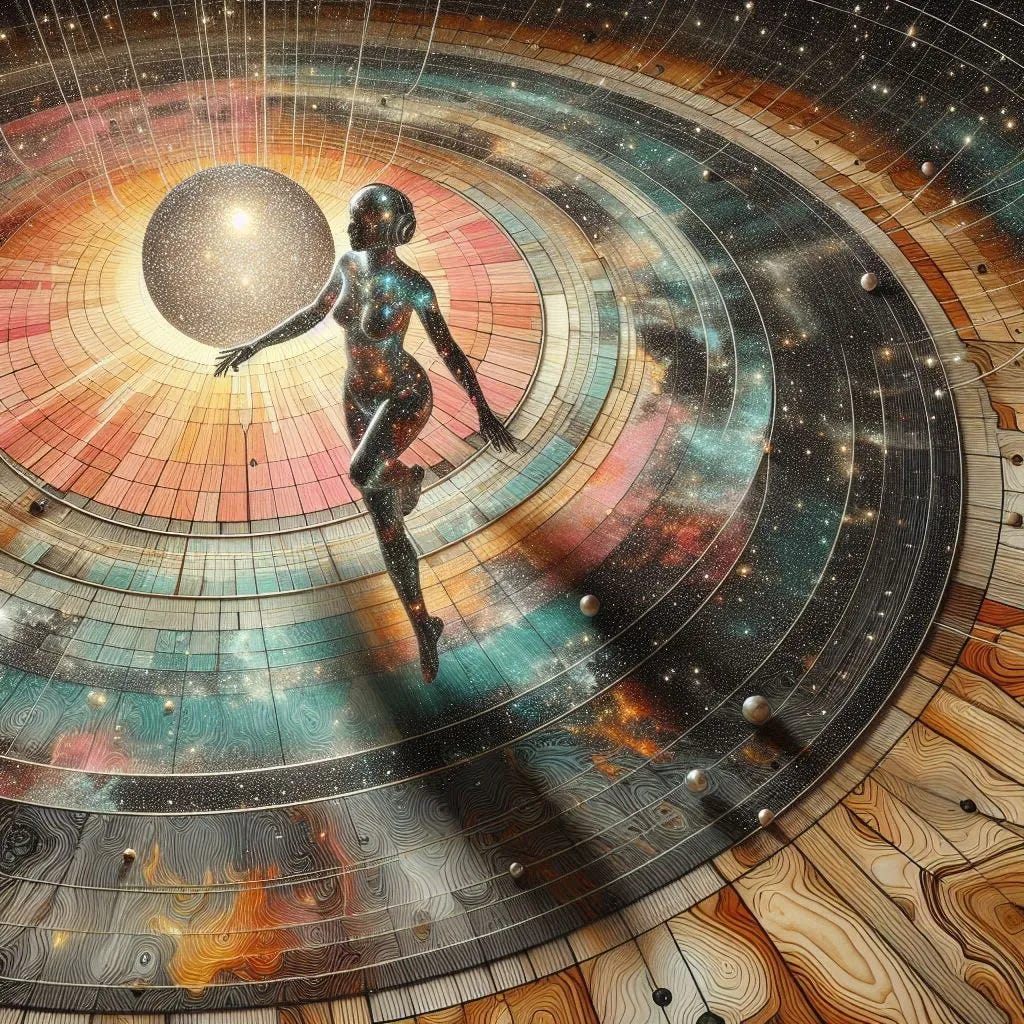


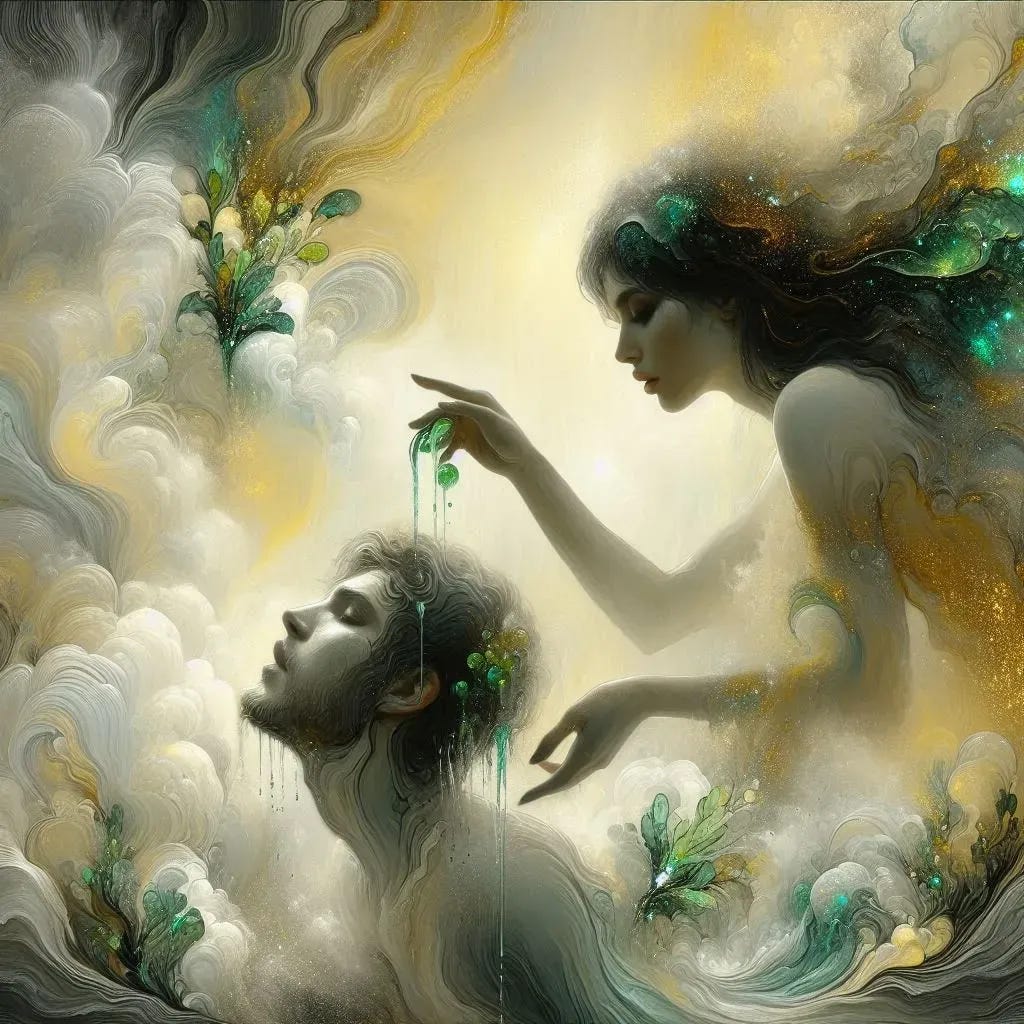
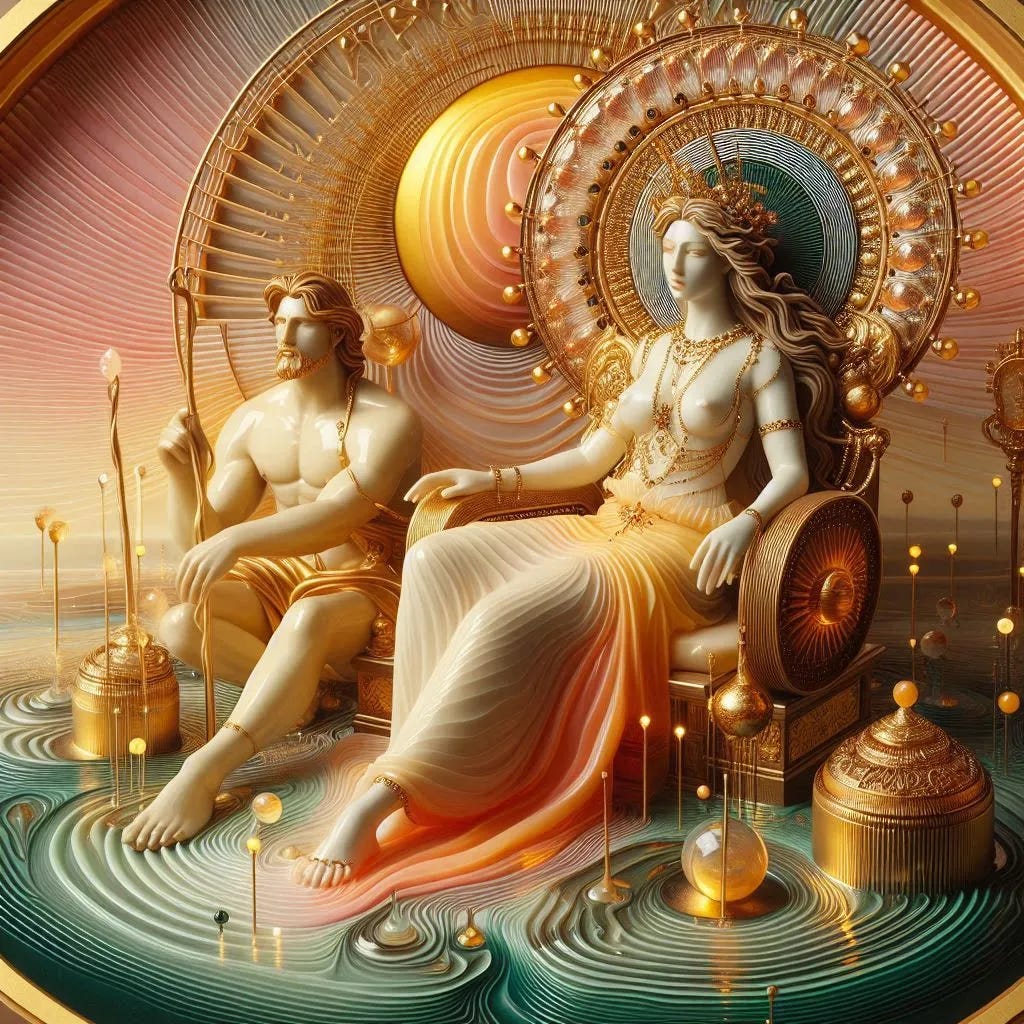
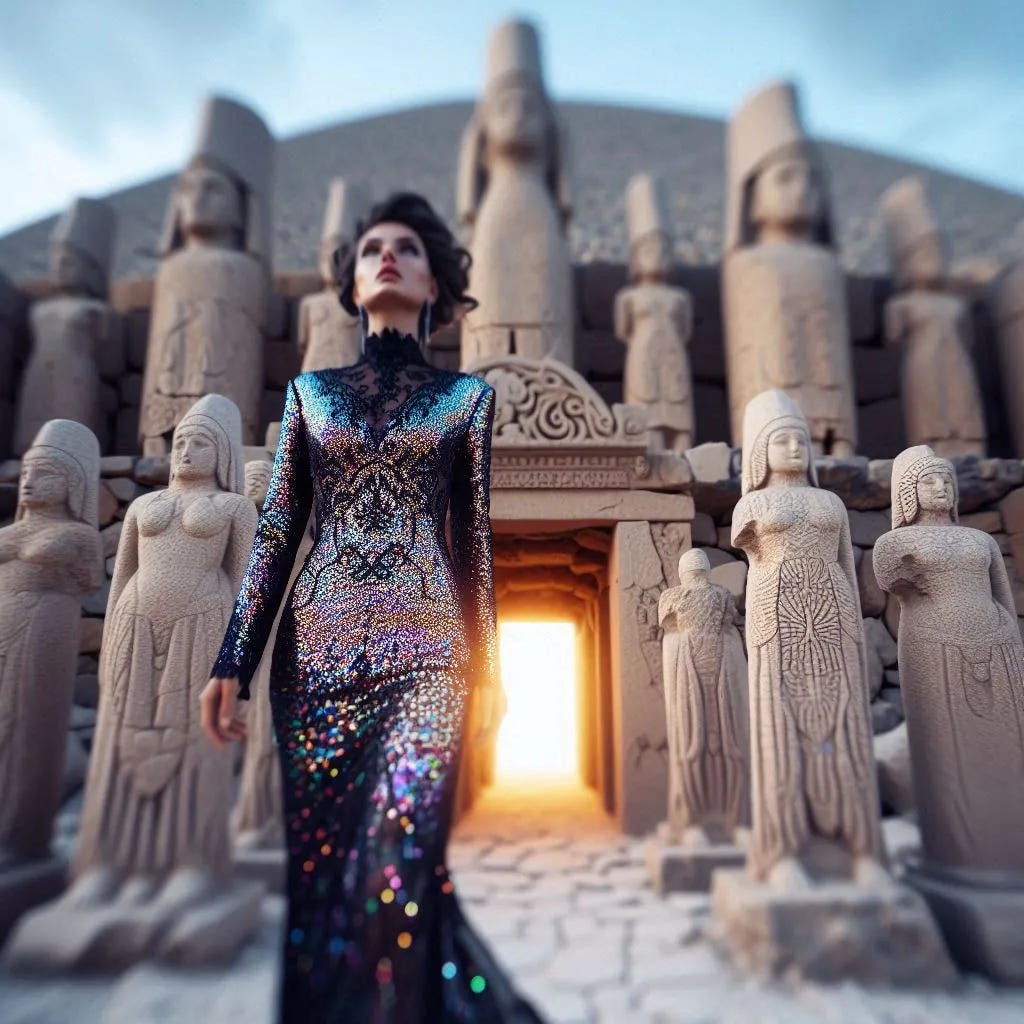


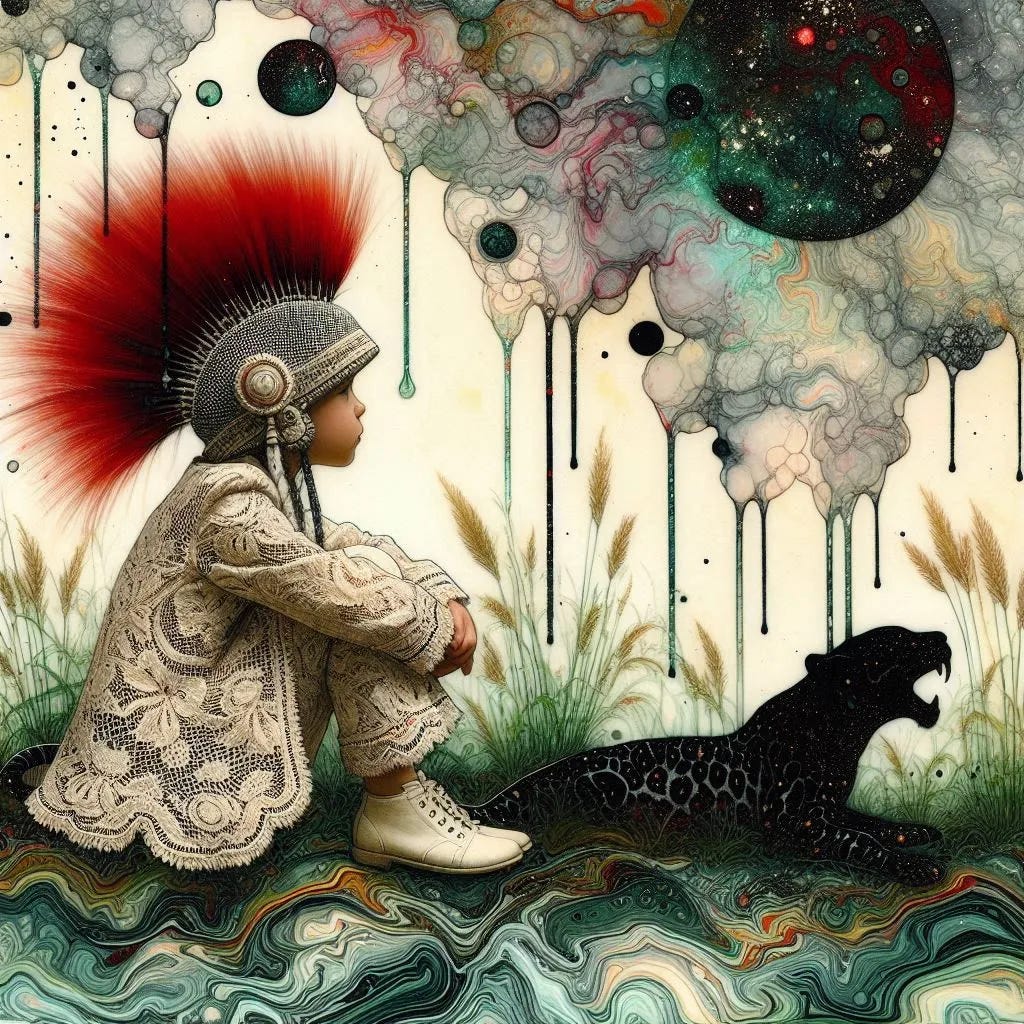
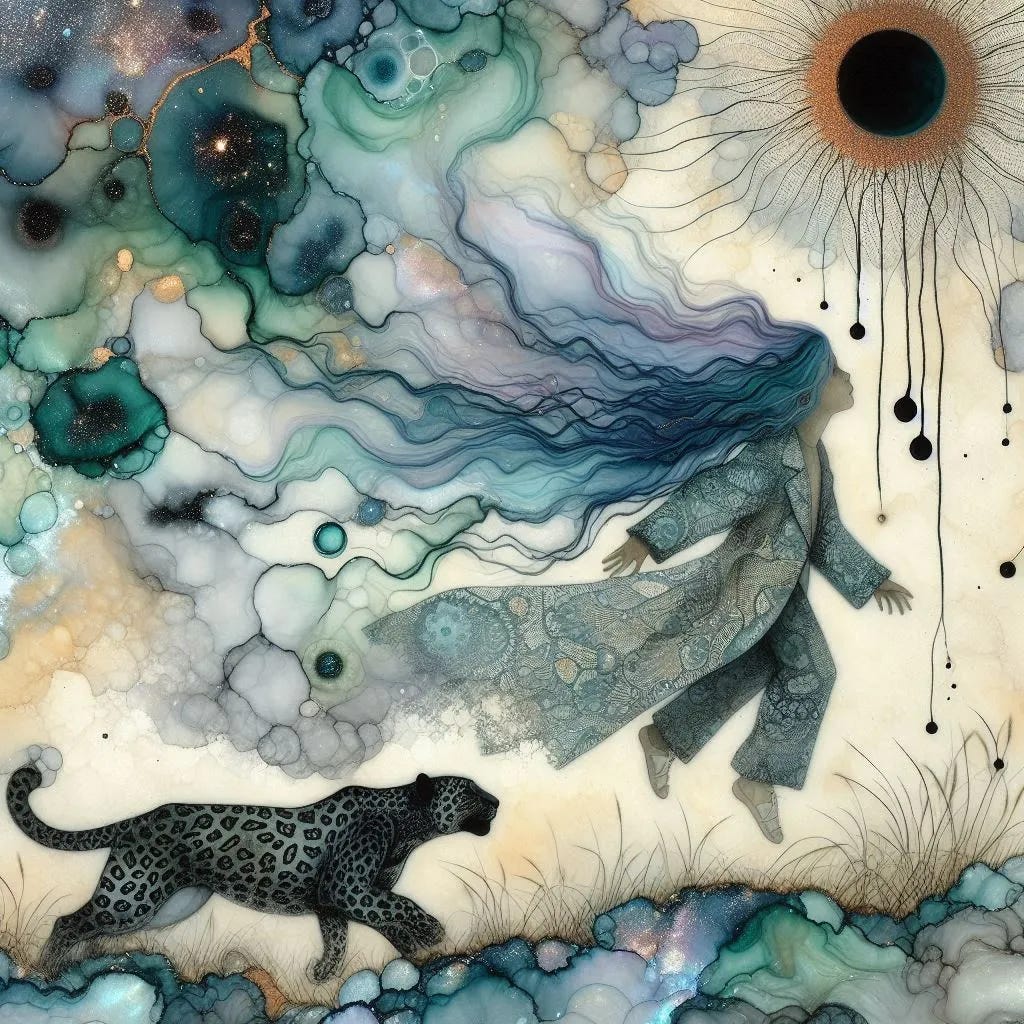

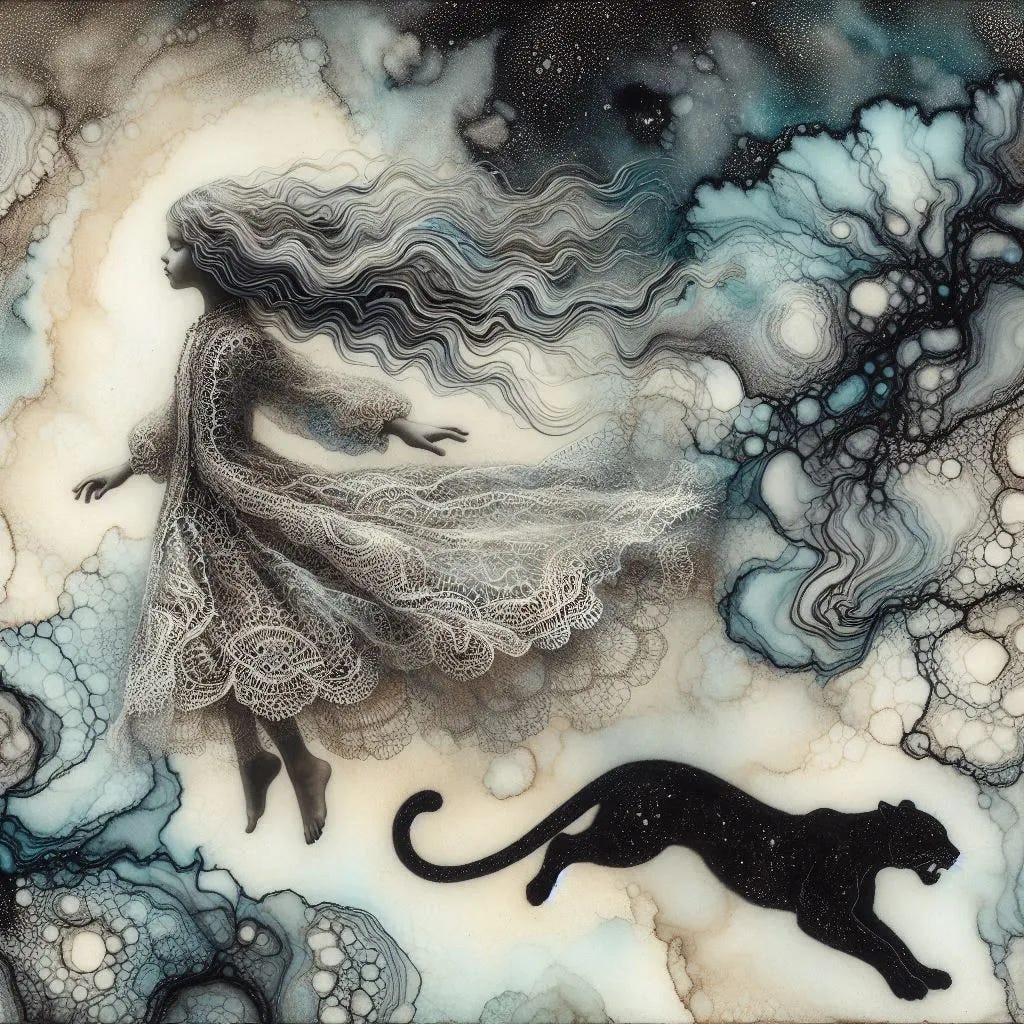




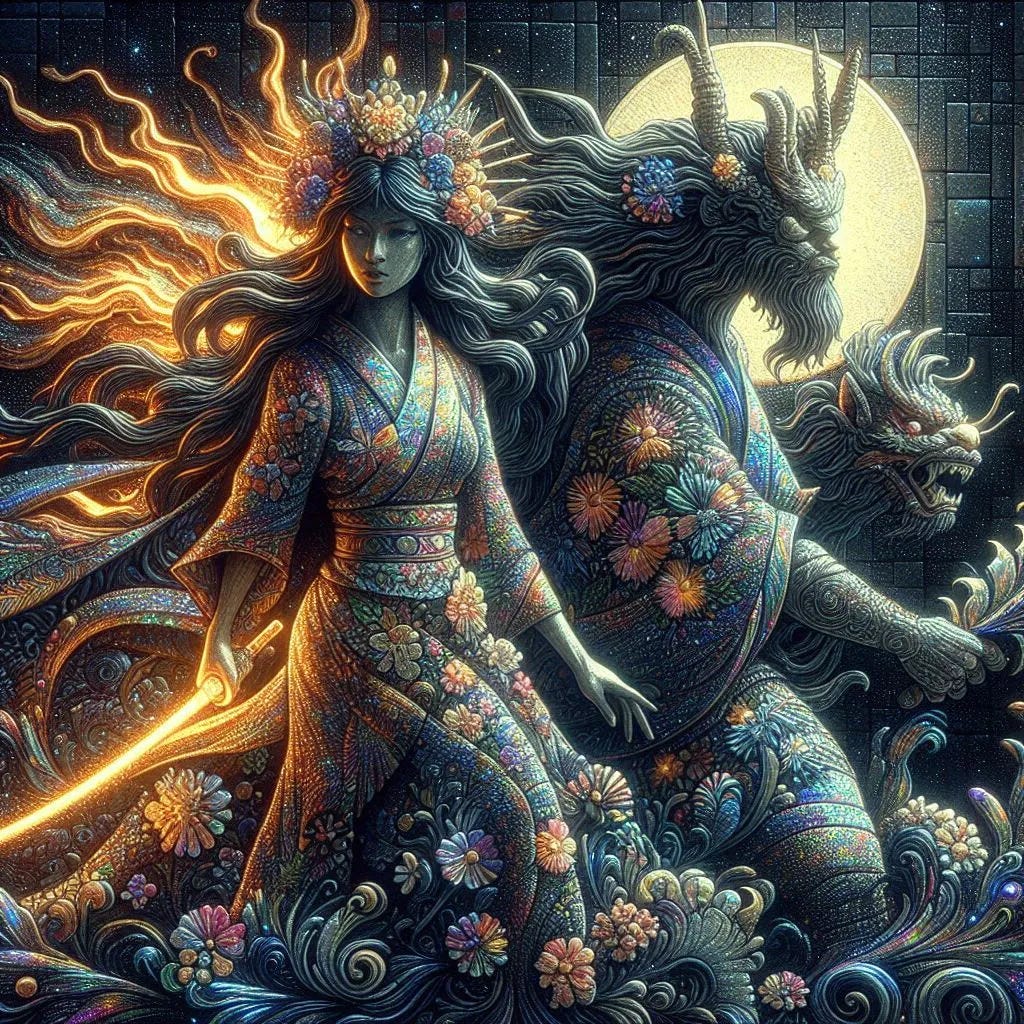
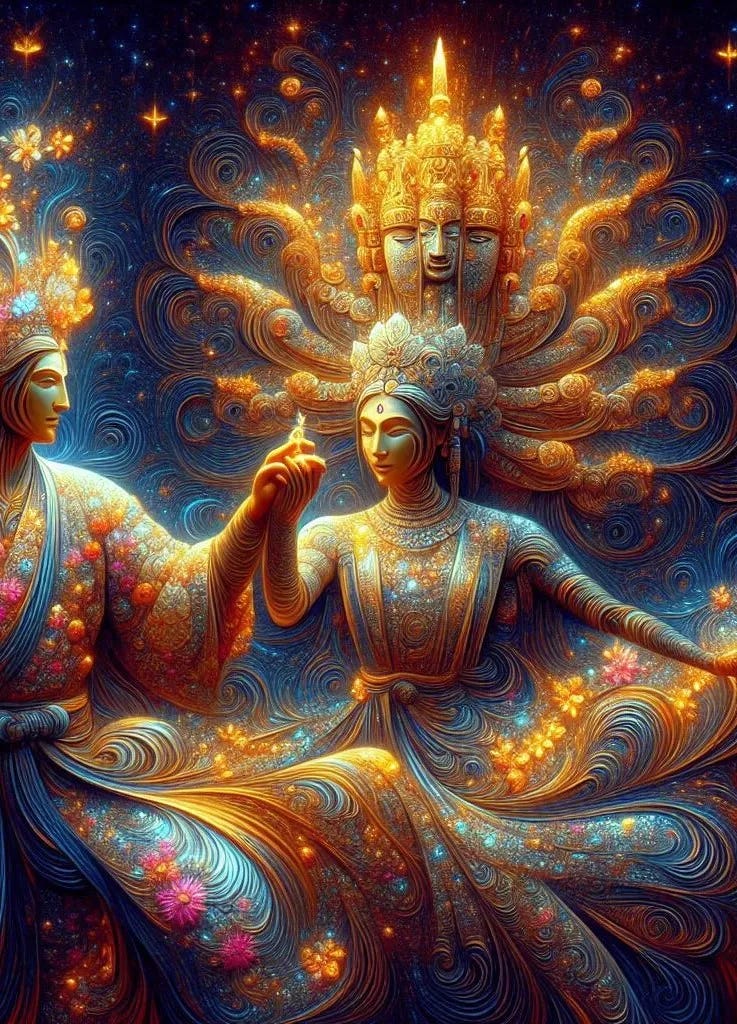
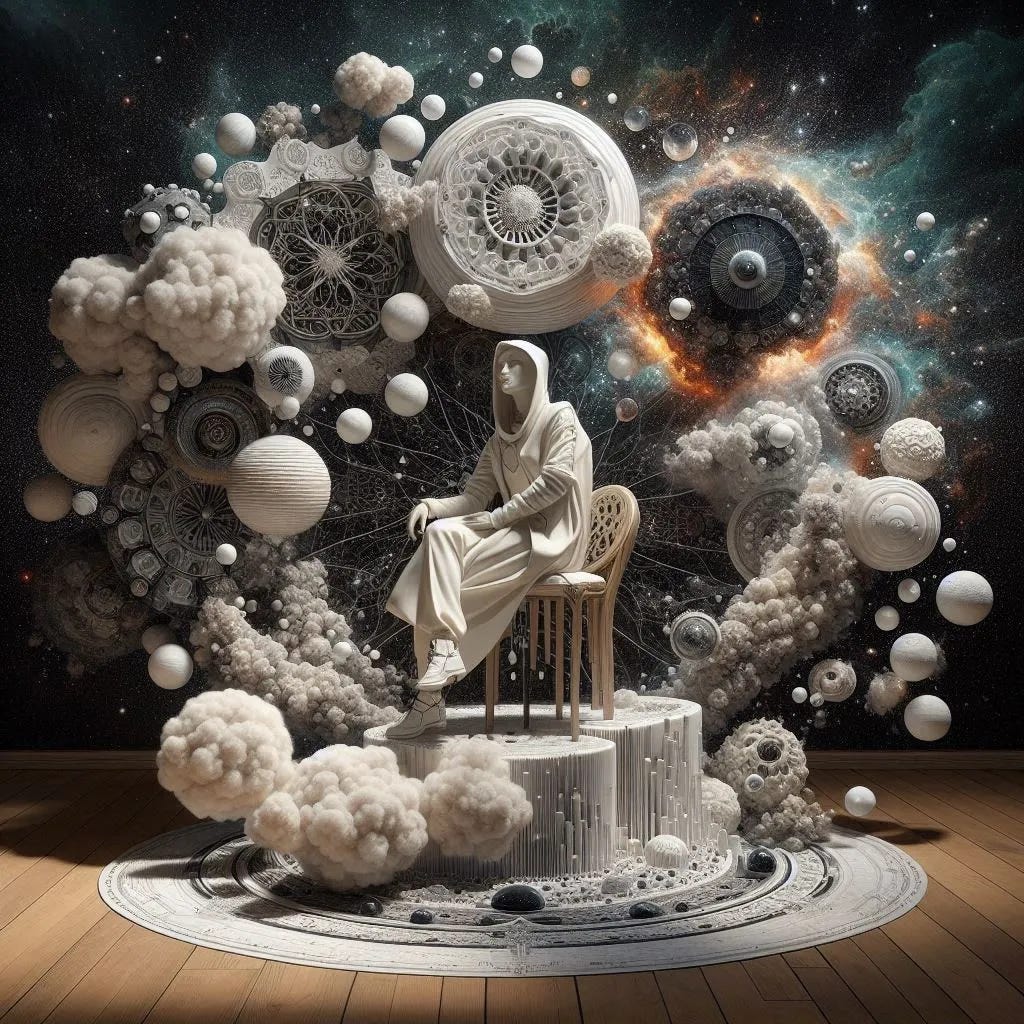



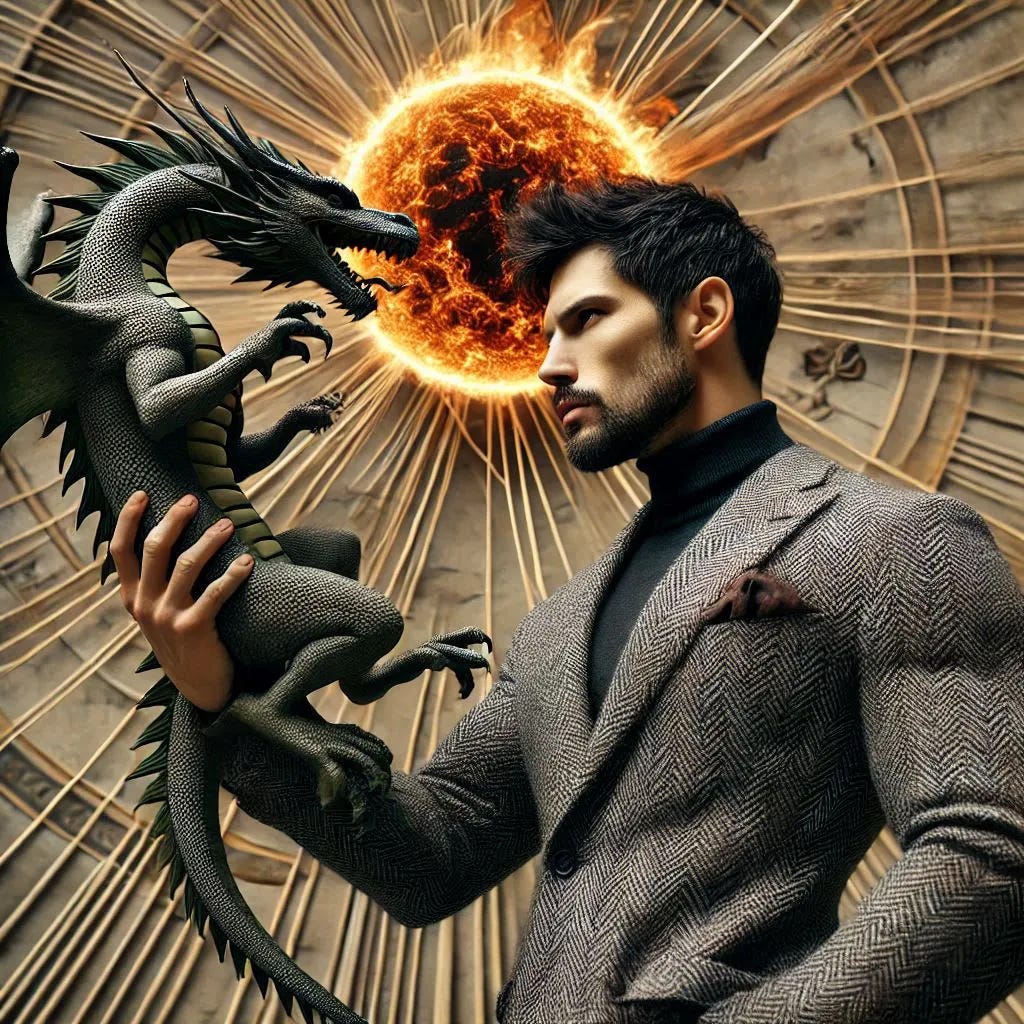





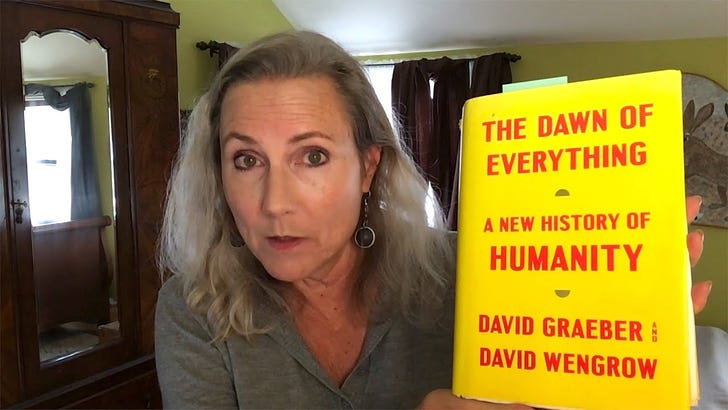
What an inspiring collection of images you have assembled to illustrate this post! So beautiful.
I would like to add my tuppence-worth of opinion on the subject you raise here.
In my family we were not permitted to discuss sex, religion or politics. This came about because my grandmother was a gypsy and her husband was a Czechoslovakian Jew. They had met in London after escaping pogroms in Europe after the first world war. They were taken in by the Leader family and my grandfather adopted the name of a son who had been lost during the war. In this way he was able to lose his original identity and disrespected surname, Cohen. He became Leonard Leader and my grandmother became Gertrude Leader, his wife.
They produced four children who were brought up without religious affiliations of any kind.
By the time I was born in 1952 my grandmother was the acknowledged matriarch of the family. She was very beautiful, very accomplished and her opinions were always sought before any decisions were made by all family members. She cared for me daily while both my parents worked full time.
I adored her because she was very kind but strict. She expected me to learn all the gypsy arts (sewing, knitting, reading cards, palmistry, healing herbs and she encouraged me to read, write and speak her language as well as English.)
She impressed upon me that women run the world and she would smile down at me saying, "We let the men THINK that they are the bosses! That is the trick, Frances!"
By the time I was only five years old and ready for school she had convinced me that, one day, I would become the head of my own family and would need to be very well informed about as many subjects as possible in order to keep the family stable and healthy enough to produce good strong future generations.
Marrying outside of our genetic pool was essential to her personal logic, so when I married a very Celtic blue-eyed Scotsman she was absolutely delighted. My cousin, Therese, migrated to Australia and married an Aboriginal man. I remember my grandmother's face lighting up as I read the letters I received informing us of 5 cheeky cherubs carrying our family line into the outback and a truly nomadic lifestyle! Nothing could have made her happier because the nomadic gypsy tribe from which she had descended had been totally wiped out in Andalusia, Spain.
I became a matriarch, just as my grandmother instructed, and I never did let any man know that I did not consider him to be 'the boss'! 😉
I was shocked by reference to Simone de Beauvoir, so I had to comment on this before finishing reading the article.
********************************
I would be careful taking Simone to Beauvoir as a reference. The following is from Wikipedia:
1. She was one of a few intellectuals who supported the execution of journalist Robert Brasillach solely based on his writings.
2. She was the precursor of CIA asset, Gloria Steinem of Women’s Lib, which turned out to be a component of the Money Powers Counterculture counterrevolution. In the 1970s when Gloria’s Women’s Lib was in full swing, she became active in France's women's liberation movement.
3. She along with her 51-year companion Jean Paul Sartre were unrepentant long-term pedophiles:
French author Bianca Lamblin (originally Bianca Bienenfeld) wrote in her book Mémoires d'une jeune fille dérangée (Memoirs of a deranged girl, published in English under the title A Disgraceful Affair) that, while a student at Lycée Molière, she was sexually exploited by her teacher Beauvoir, who was in her 30s. Sartre and Beauvoir both groomed and sexually abused Lamblin.”
In 1943, Beauvoir was suspended again from her teaching position when she was accused of seducing her 17-year-old lycée pupil Natalie Sorokine in 1939. Sorokine's parents laid formal charges against Beauvoir for debauching a minor. Beauvoir's licence to teach in France was revoked, although it was subsequently reinstated.
In 1977, Beauvoir signed a petition along with other French intellectuals that supported the freeing of three arrested paedophiles. The petition explicitly addresses the 'Affaire de Versailles', where three adult men, Dejager (age 45), Gallien (age 43), and Burckhardt (age 39) had sexual relations with minors of both sexes aged 12–13.
Sylvie Le Bon and Simone de Beauvoir met in the 1960s, when Beauvoir was in her fifties and Sylvie was a teenager. In 1980, Beauvoir, 72, legally adopted Sylvie, who was in her late thirties, by which point they had already been in an intimate relationship for decades.
Simone lived with Claude Lanzmann from 1952 to 1959. Lanzmann a French filmmaker, best known for the Holocaust documentary film Shoah (1985), which consists of nine and a half hours of oral testimony from Holocaust survivors, without historical footage.
As for her pedophile soulmate Jean Paul Sartre:
The French philosopher Jean-Paul Sartre was famous for his anti-colonial positions, but waffled when it came to the Israeli occupation of Palestine. Why did he struggle to be consistent, and what does that tell us about “progressive except for Palestine” intellectuals today?
https://www.currentaffairs.org/news/2021/06/jean-paul-sartre-and-the-problem-of-being-progressive-except-for-palestine
**************************
Both of these characters are scum of the earth. The only reason they were not jailed, is that they served the agenda of the Money Powers. Mind you, they wouldn't last long in any jail, prisoners bring swift justice to pedophiles.